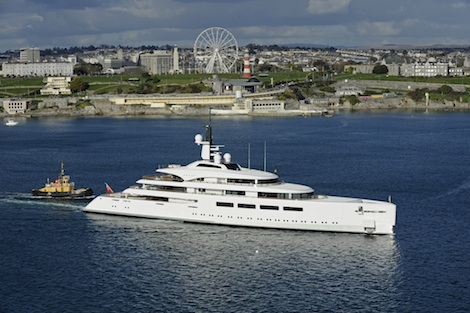First effects of PYC seen in new build and management
The recent approval of two management companies in offering services for passenger vessels subject to the Passenger Yacht Code (PYC) has prompted investigation into its broader take up. Just how great is the interest across the industry in adopting what is still effectively an optional decision for new builds?
How far is this an indicator of interest across the industry in adopting what is still effectively an optional decision for new builds?
At the time of writing, it is understood by SYN that two superyachts – including 96m Devonport built VaVa II - have been delivered under PYC since its inception in November 2010, when Maritime Authority of the Cayman Islands (MACI) and Red Ensign Group (REG) launched the Code of Practice.
This picture, however, belies significant activity behind the scenes, said Peter Southgate, Advisor of Maritime Policy & Legislation Development at (CISR), the regulating body of PYC-compliant vessels and management systems for Cayman Islands vessels.
“Since [the PYC code’s launch] the interest from industry has surpassed the expectations of many. [In addition to two delivered yachts] there are several more either in build or at the design and bid stage.
“The CISR alone has approximately ten or eleven projects, either in build or at the design stage. As to be expected, the majority of these projects will come from yards in Europe, but there is also some interest in areas outside of Europe and we believe this interest will certainly grow.”
VaVa II at 96m is built under the PYC code to accommodate up to 36 passengers safely
The Code is developed to provide an equivalent mechanism for vessels carrying more than 12 and up to 36 passengers, and necessarily involves adherence to stricter IMO safety codes. LY3, launched at Monaco is limited to vessels of 12 passengers, but PYC’s criteria is based on passenger numbers - 13 to 36 passengers, with no upper or size limit - and inevitably higher passenger numbers will invoke higher safety requirements.
The test for PYC-compliant safety management systems is therefore a rigorous process, a reflection of the yachts’ new safety requirements, as Jon Gray at Inserve can testify.
“We had to demonstrate we had the knowledge and expertise to do it. Just because someone operates a number of ordinary yachts doesn’t mean they will be allowed to operate passenger yachts,” said Gray.
To upgrade their DOC, PYC managers and systems companies must show how they can manage increased risk and meet statutory obligations, associated with Passenger Ships, that already exist within the International Maritime Conventions, including increased drill frequency and more frequent inspections.
It is encouraging to see growing, initial numbers of PYC-built yachts. Safety is a priority at sea and it makes sense the MACI and REG’s work finds a ready audience amongst the next generation of superyacht owners choosing their new builds.
Related Links
Jan 2012 edition of the PYC code can be downloaded here
MACI Website
Inserve Yachts Profile | Inserve Yachts Website
Döhle Yachts Profile | Döhle Yachts Website
NEW: Sign up for SuperyachtNewsweek!
Get the latest weekly news, in-depth reports, intelligence, and strategic insights, delivered directly from The Superyacht Group's editors and market analysts.
Stay at the forefront of the superyacht industry with SuperyachtNewsweek
Click here to become part of The Superyacht Group community, and join us in our mission to make this industry accessible to all, and prosperous for the long-term. We are offering access to the superyacht industry’s most comprehensive and longstanding archive of business-critical information, as well as a comprehensive, real-time superyacht fleet database, for just £10 per month, because we are One Industry with One Mission. Sign up here.
NEW: Sign up for
SuperyachtNewsweek!
Get the latest weekly news, in-depth reports, intelligence, and strategic insights, delivered directly from The Superyacht Group's editors and market analysts.
Stay at the forefront of the superyacht industry with SuperyachtNewsweek





